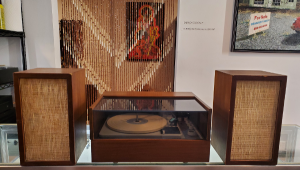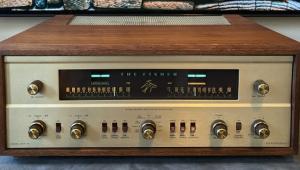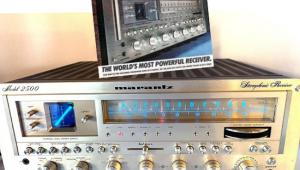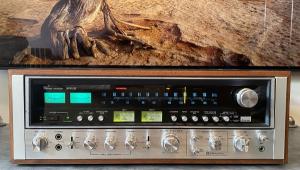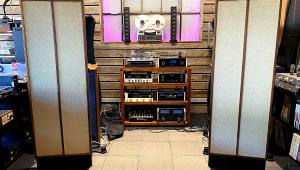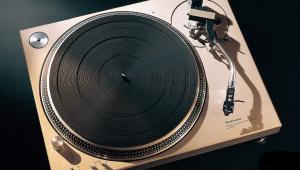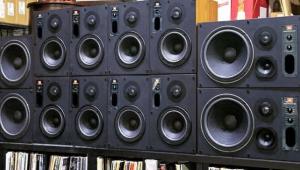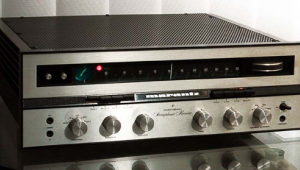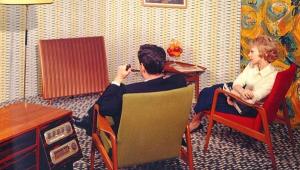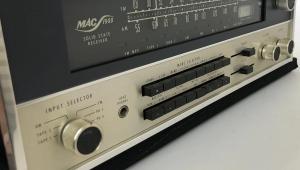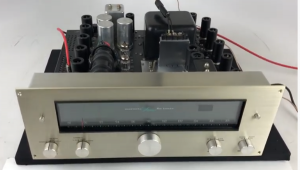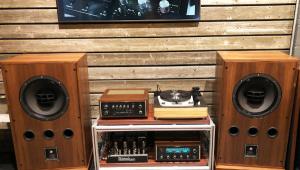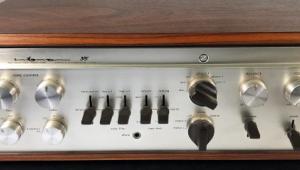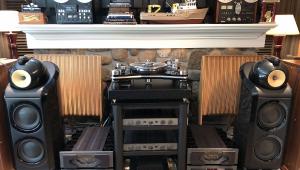Making mix tapes was one of the high spots of my youth. Oh, music is easier today, but when I was young, a fine cassette deck was a wonder. Wish I could go back and relive those days, even for only a single day.
Enter the (Nakamichi) Dragon
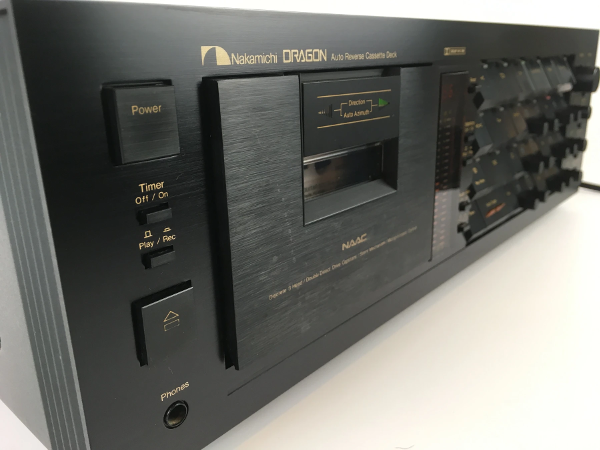
Talk about classic.
This mother-of-all-cassette decks sold for a cool $2,499 ($6,681 in today’s dollars) when it debuted in 1982 and enjoyed a spectacular run that lasted through 1993.
In a definitive 1983 test report published by our predecessor, Stereo Review, tape guru Craig Stark called the deck’s record-playback “impeccable” and concluded: “The Nakamichi Dragon is the finest cassette deck we have yet tested. No doubt there will be challengers for that title, but they will be up against a real fire-breathing champion when they appear.” (You can read Stark’s full report here, with a thoughtful foreward by former S&V editor-in-chief Rob Sabin.)
SkyFi Audio owner Fernando Zorrilla says the recently acquired Dragon actually came from the legendary New York City hi-fi dealer, Stereo Exchange, SkyFi’s joint-venture partner. “They get calls every day,” he explained. “‘Hey, we’re moving. Hey, we don’t use this anymore.’” This particular deck came from a doctor in New York City who hadn’t used it in quite a while.
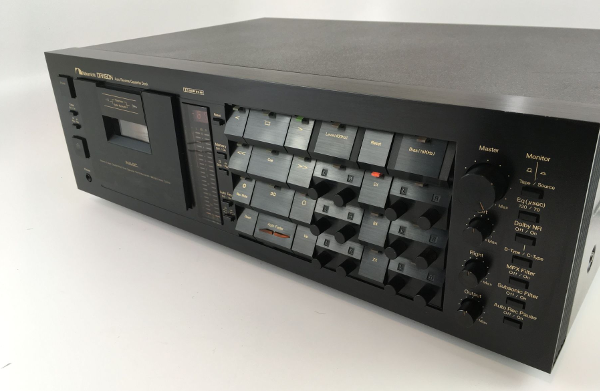
But Zorrilla revealed secret as we chatted about the iconic tape deck. “With the Dragon, in particular, a lot were sold to our local market. It was the best and most expensive tape deck at the time and the [New York/New Jersey/Connecticut)] tri-state area has a lot of them.”
So many that — would you believe — SkyFi actually stockpiles them.
“We have like six or seven Dragons, all just waiting for refurbishment,” he casually revealed as my jaw dropped. “We accumulate them over time and then knock them all out in the shop at one time.”
When the time is right, the innards of these gems will be completely overhauled by SkyFi’s crack technicians. All belts, pinch rollers, forward and reverse wheels, etc. will be replaced and all moving parts tested and lubricated to ensure like-new operation. As for the exteriors — especially the front panel with its multitude of buttons, switches and knobs — they will likely remain untouched, except for a thorough cleaning. (More on this in a moment.)
“One thing that’s ubiquitous about our Dragons is none of them work,” Zorrilla said. “Zero percent — unless they’ve been serviced recently. Any Dragon or Nakamichi tape deck from that era that’s been sitting more than 10 years is not going to fire up.”

Not all that surprising when stop to consider the complexity of this mechanical marvel with its belts, bushings, tape wheels, and countless moving parts. “The old rubber disintegrates so you’ll find a pile of tar at the bottom of unit,” Zorrilla explained.
Back to the Nak’s striking black exterior… “The Dragons we acquire are prized possessions so they’re usually very well kept,” Zorrilla said. “A couple of them have a missing button — which is impossible to find — but for the most part they’re in fabulous condition.”
So how much does a refurbished Nakamichi Dragon go for in 2020?
“We tend to sell them for anywhere between two to three thousand dollars,” Zorrilla said, much of that owing to the extensive labor required to restore the intricate mechanical workings behind the world’s greatest cassette deck.
For more information on SkyFi and its current offerings, visit skyfiaudio.com
Related:
Ultra Rare Find: Nakamichi Dragon CD Changer
- Log in or register to post comments


Had many Technics decks as a teenager including the M85MKII. Absolutely beautiful deck and made money at school selling pre-recorded tapes to classmates. Don't really miss the tape hiss and limited dynamic range though. Even with Dolby B,C,S and DBX they were good but always some what limited sound quality wise.

A Nak was a thing of dreams for any audiophile of the seventies. With discrete (i.e., not sandwiched) record and play heads which could be dialed in by the user for exacting azimuth alignment The Dragon was a true statement product for the entire category. A recording on this deck was virtually indistinguishable from the source something no other deck at the time could do under the most demanding circumstances. I always lusted for one of these marvels of mechanical and electrical engineering. Phillips should have given Nakamichi some kind of recognition for taking their original lowly cassette format to a level of fidelity never envisioned as possible. I must say even though it isn't practical I'd like to see what those Nak engineers could come up with in 2020? An even higher performing machine and tape? Oh well, the Dragon is actually so fine a totally refurbished one would do quite well even now.

Considered the best cassette deck ever made, it was praised in a 1983 Stereo Review test report as having "impeccable" record-playback quality. Its cutting-edge Auto Azimuth Correction the pizza edition ensured the best possible playback by dynamically adjusting the tape head’s alignment.
